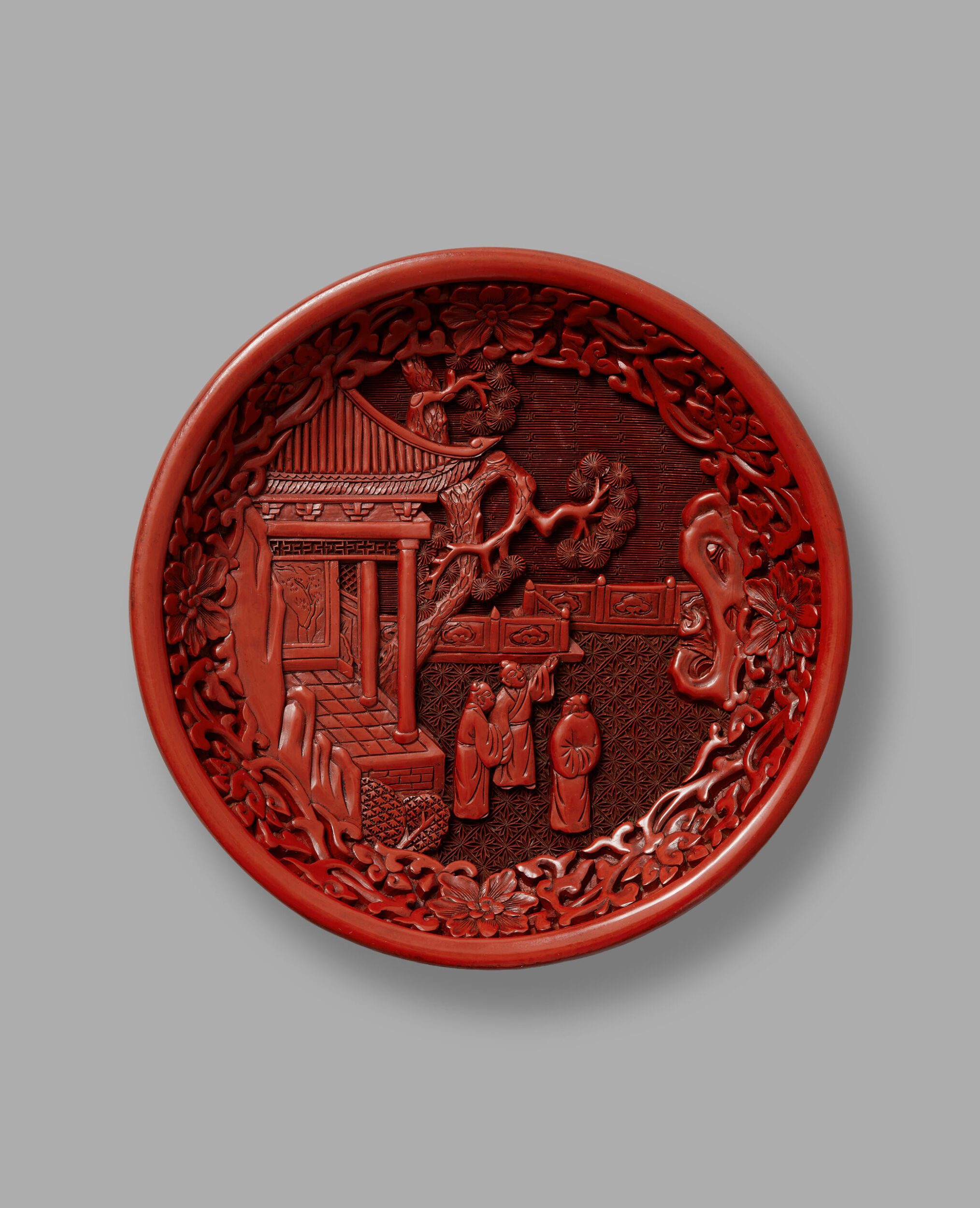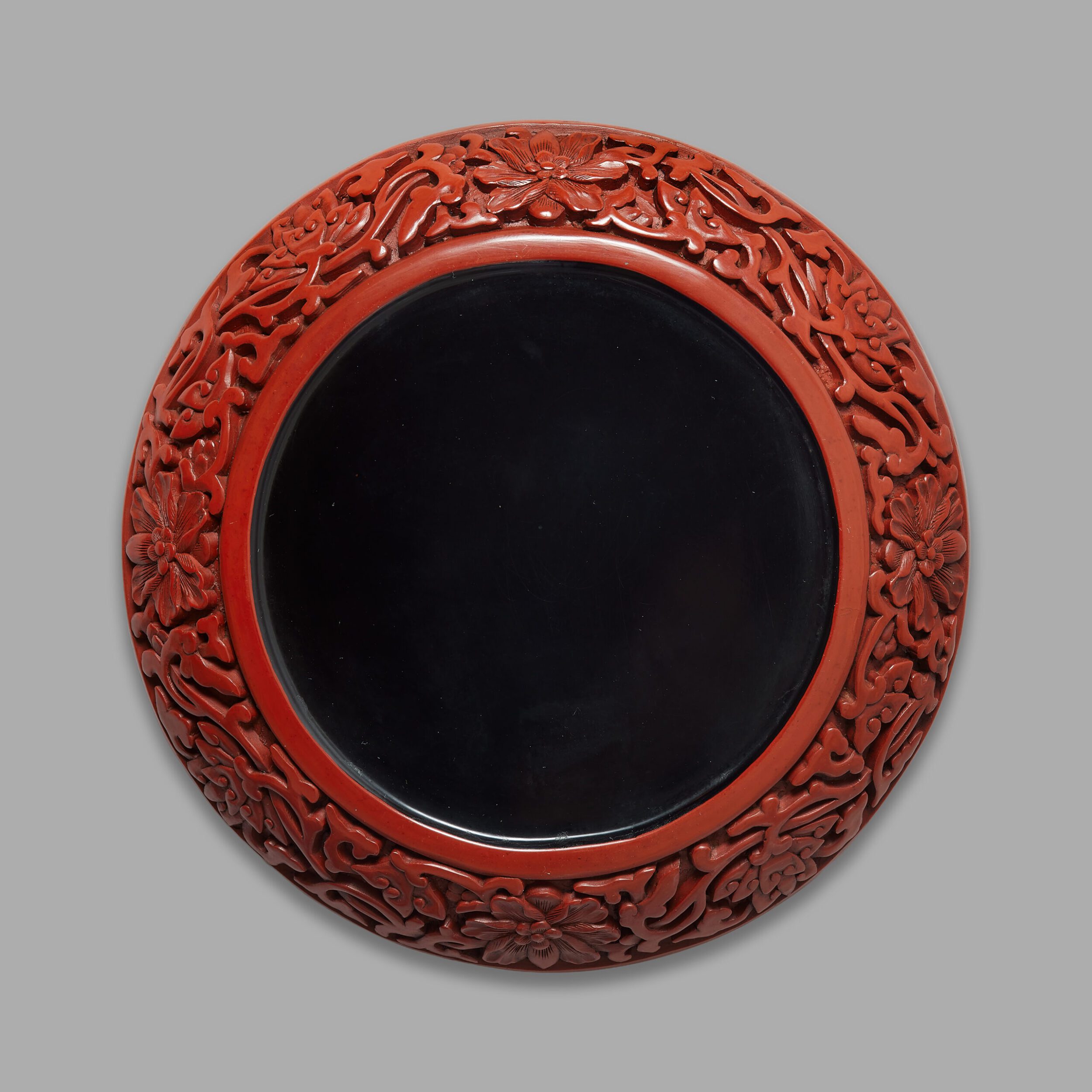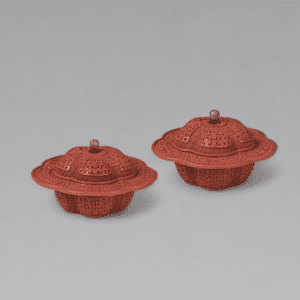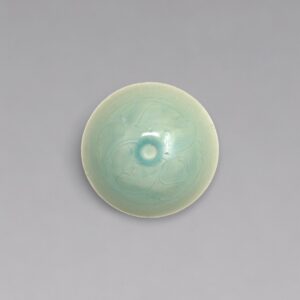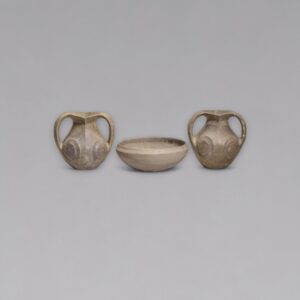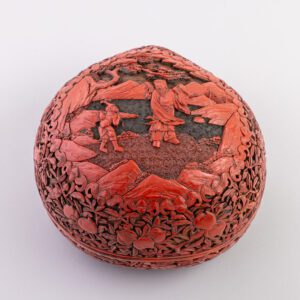The centre of the circular dish is exquisitely carved in deep-relief, depicting three scholars in the garden in front of a pavilion. The decorative rim around the central scene as well as the outside of the dish is carved with lotus flowers and floral sprays, possibly vines. The base is covered in black lacquer.
A small and rare red lacquer ‘scholars’ dish (early Ming Dynasty, Yongle period, 1403-1424)
Description
Dimensions: 12.3 cm diameter, 2.1 cm high
Provenance:
A private German collection
The centre of the circular dish is exquisitely carved in deep-relief, depicting three scholars in the garden in front of a pavilion. The decorative rim around the central scene as well as the outside of the dish is carved with lotus flowers and floral sprays, possibly vines. The base is covered in black lacquer.
The court wares of the early fifteenth century are widely regarded as among the finest examples of Chinese carved lacquer. Exceptional craftsmanship was a defining feature of imperial production. The base coatings alone could comprise more than one hundred layers of polished lacquer, creating the depth needed for the characteristic motifs—deeply carved with smooth contours and softly rounded edges. The subject matter reflects the official lacquer style of the Yongle period, inspired by the esteemed painted landscape traditions of the time. In these works, philosophical themes such as humanity’s relationship with nature took precedence over purely decorative motifs like floral or geometric designs.
Compare a circular box and cover in the same style typical for the Yongle period, depicting a similar scene in the collection of the Minneapolis Institute of Art, Accession Number 2007.40a, b.
